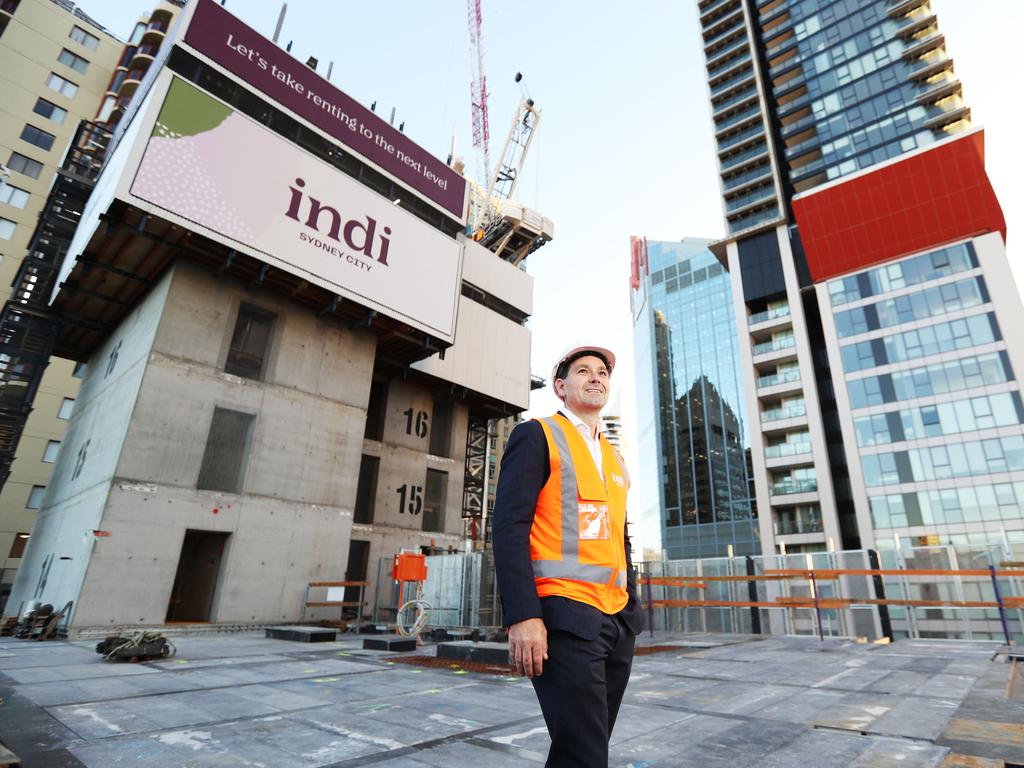AXA cements support for build-to-rent in Australia
Global investment giant AXA Investment Managers is set to step up its investment in the emerging build-to-rent market in Australia.
Global investment giant AXA Investment Managers is set to step up its investment in the emerging build-to-rent market in Australia, according to the global head of AXA IM Alternatives, Isabelle Scemama.
Ms Scemama said the group – which launched its build-to-rent strategy in Australia in November with a deal with the National Housing and Finance Investment Corporation (NHFIC) and St George Community Housing for 350 affordable dwellings in western Sydney – was keen to bring its expertise to Australia.
AXA IM Alts is the largest investor in real estate in Europe and the ninth largest in the world, with $285bn in assets.
“We are convinced of this specific opportunity in the build-to-rent market in Australia, particularly affordable BTR residential assets,” Ms Scemama said.
“This is where we are focused on (in Australia). It is where we see the market lacking, compared to what is happening in Europe.”
Her comments come as the federal government has acknowledged the importance of the build-to-rent market as a way to relieve the housing crisis, particularly for lower income workers.
The sector, which is highly developed in Britain, Europe and the US, has lagged in Australia until recently because of traditionally high levels of home ownership.
But with rising house prices taking home ownership out of the reach of many younger Australians, a shortage of rental housing and migration increasing, the built-to-rent market is set to expand to meet the demand at the lower end of the market.
NHFIC has estimated that there will be a shortfall of some 106,000 dwellings by 2027, with cities like Brisbane and Sydney having shortages of more than 10,000 dwellings each within the next five years.
The government moved to encourage the sector in last week’s budget by halving the withholding tax for build-to-rent developments from 30 to 15 per cent, and increasing the depreciation rate for BTR properties from 2.5 per cent to 4 per cent a year.
Under the budget measure, the apartment buildings will have to be retained under single ownership for at least 10 years and have to offer tenants leases of at least three years.
Anthony Albanese, who has set a goal of building a million homes over five years from 2024, said the build-to-rent budget measures would provide the private sector with “incentives to engage in housing supply”.
Ms Scemama said the government’s incentives were a good idea but AXA IM had made its decision to invest in the market well before the budget, based on its fundamental attractions as an emerging asset class in Australia.
“Our experience of the market in Europe convinces us that there is a great opportunity in Australia,” she said.
“The market does not exist in Australia and there is a serious case to take part in what is a very attractive opportunity.”

AXA IM has some $8bn in property investments in Australia across more than 40 projects.
The company sees the increasing cost of living and higher interest rates pushing more ordinary Australians out of the home ownership market towards more long-term renting, as is more common in Britain and Europe.
AXA’s deal with NHFIC and community housing provider St George, for some 350 social and affordable dwellings, was the first time a community housing provider in Australia had been able to link up with a major private institutional investor to deliver a large scale project.
NHFIC, which is providing a $300m facility for the partnership with AXA and St George, was given increased scope to operate in the budget, with the federal government lifting its borrowing potential by $2bn to $7.5bn, which the government estimates will help fund the construction of another 7000 low-income dwellings.
Ms Scemama said AXA IM had singled out Australia and Japan as the two markets to invest in the region.
She said Australia offered a transparent, liquid and professional property market that was attractive for major investors of capital like AXA IM.
“Australia is a transparent, developed, liquid market which is a large enough market for us to matter and be scalable.”
Ms Scemama said AXA IM has been reducing its exposure to the commercial office block market around the world over the past five years and increasing its exposure to the residential market, including the affordable housing market.
“We like residential,” she said. “We have a strong conviction that residential offers very high rates of return and a good protection against inflation.”
She said AXA was expecting a major adjustment in the global commercial real estate market over the next two years with a big “refinancing wall” ahead when investors would be forced to renegotiate financing deals at much higher interest rates. “We are at a turning point. The market will offer more opportunities from the end of the year and into 2024 and 2025,” she said. “The big refinancing wall which mainly relates to office building, will materialise at the end of this year and into 2025.”
Ms Scemama said this could potentially see highly leveraged investors having to sell off their properties.
“Investors or managers who are managing assets through highly leveraged vehicles will probably have no other options to sell their assets at a big discount when their financing comes to maturity,” she said.
Meanwhile, the cost of financing had risen by two to four times in recent years through a combination of higher interest rates and higher margins being charged by lenders.
“Real estate cannot be immune from that,” she said.
She said the global commercial office block market would be split between older assets which were built before 2000, and more modern properties which were more environmentally friendly and had better amenities.
Ms Scemama estimated that as much as 80 per cent of the office market in Europe was “obsolete” and would need major capital injections to bring them up to current day standards.
She said there was strong competition among good tenants for Grade A office buildings who were paying record rents but did not want to rent older buildings.
The market for these “stranded assets” could be expected to make a significant readjustment as the financing cliff hit.







To join the conversation, please log in. Don't have an account? Register
Join the conversation, you are commenting as Logout